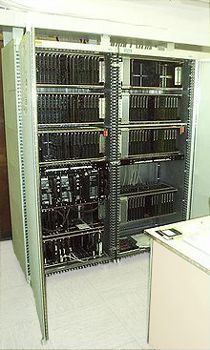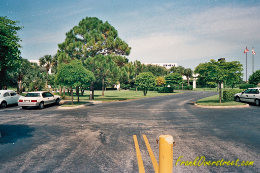Siemens Hicom PBX
Siemens developed the Hicom PBX as a family of PBX's supporting as many as 20,000 ports comprising 16,000 extensions and 4,000 trunks. Siemens overall concept was for the Hicom PBX to be a "World System" in which common PBX functionality would be developed in Germany while national specific variations would be done at development centers around the World.

A 600 - 3000 line Siemens Hicom PBX.
In Boca Raton, we already proved our ability to design, develop and sell a successful PBX in the form of the Saturn system which was actually Siemens's first digital PBX. However, greater economies of scale were believed possible with just a single core system spawning unique national variants. The Hicom PBX was to be the company flagship PBX worldwide.
Our task in Boca Raton was to take a 600 - 3000 line German Hicom PBX, make it compatible with North American signalling standards, add North American specific PBX features and market the Hicom PBX through existing marketing, distribution and service channels.
The timing seemed right as there was great anticipation throughout the communications industry of a wave of business as voice and data services converging onto a single platform. Would the platform be the PBX, LAN, or something else?
At the time, the voice-data convergence platform was believed to be the PBX and Siemens placed a large bet on the Hicom PBX.
in the late 1980's ISDN was an emerging international communications standard heralded as making possible the convergence of voice, data and video communications. The Siemens Hicom PBX supported numerous integral, standalone and networked servers for computer telephony integration.

Siemens headquarters building in Boca Raton. This building was in the Arvida Park of Commerce and was at the Yamato Road security gate. It was commonly called the STP building.
Click to enlarge
With it's extensive ISDN support, a Hicom PBX could be seamlessley networked worldwide.
While the PBX ultimately lost out to the LAN as the converged communications platform, most traditional PBX features and functionality did not go away. All that happened is the underlying architecture and transport protocols changed from circuit switched TDMA to, ethernet and IP based carriers, protocols and architectures. The features and functionality remained substantially the same.




